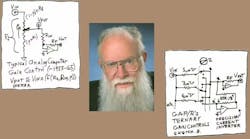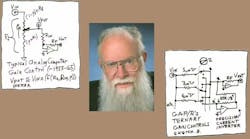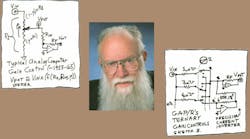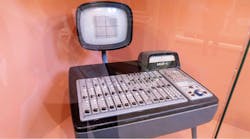In my last column, I showed you how to build an analog computer that simulates the motion of a car over its wheel when stimulated by a "bump" (electronic design, March 31, p. 20). Could these systems be simulated with Spice? Sure, these days they can. Yet analog computers have been around since the 1950s, and Spice has only been around for 25 years, meaning the heyday of analog computing lasted well over 20 years. It's true that special-purpose simulation programs for analog systems were written for digital computers in the late 1960s and early '70s. So, we can't say, "analog computers would still be here if only...." But simulation using digital computers became a lot easier when you could use Spice. You didn't have to write your own Basic program.
Do analog computers always "tell the truth"? Not a whole lot better than Spice. There are 1000 ways that Spice can tell lies, and there are hundreds of ways that an analog computer can lie—but they are different lies.
Did I simulate the system shown in my last column with 48 K2-Ws? No, but I did use one K2-W plus approximately six sections of LMC6082. It worked.
Using Your Analog Computer In fact, there are many real-world systems that can be simulated pretty well with analog computers. My truck speed controller (Electronic Design, Nov. 6, 2000, p. 146) was an analog computer. It worked surprisingly well and gave me no trouble. My PID controllers for temperature control have worked well. The ball-on-beam balancers (electronic design, Analog Applications Issue, Nov. 20, 1995, p. 50) that I built were analog computers. And my final, best version was a hybrid (analog and digital) computer. Many analog circuits that I design are rather like analog computers. I never assume these circuits are going to work right the first time; I always lay them out to make it easy to tweak, adjust, and adapt.
Maybe I can show some results on my Web site. Go to www.national.com/rap and look for analog computing near the top.
Now that we have an analog computer, how do we use it? The strong point of an electronic analog computer is that it's fairly easy to manipulate a variable to see what the system will do. (That's a major advantage of all analog systems.) These days, you can change a coefficient of a Spice parameter in just a few seconds and see the results in (perhaps) just a few seconds more—best case. Thus, digitally facilitated computation can be reasonably interactive. But it wasn't always that way. We old-timers can remember when a "Spice-deck" was really a huge stack of punched cards, and if you turned in your simulation job, it could take hours to get a result. Asking for three variables might take days, if you had enough priority to get good computer time. Analog computers have always had real-time interaction between the twist of your wrist to change the coefficient, and the response on a CRT. So, you can get a good feel for what is happening in your system.
Stay tuned for Part 4, which will come in one of my May columns. I'll be talking about various methods for adjusting the analog computer's coefficients. You'll also get to see George Philbrick's ternary gain-setting schemes.
Comments invited! [email protected] —or:
Mail Stop D2597A, National Semiconductor
P.O. Box 58090, Santa Clara, CA 95052-8090






